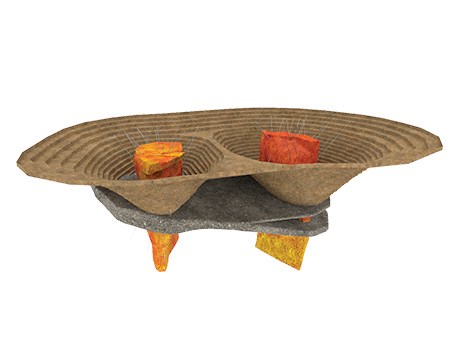Zenyatta Ventures Ltd., owner of the Albany graphite deposit near the northeastern Ontario communities of Constance Lake First Nation and Hearst, has announced a new strategic focus on graphene, a nanomaterial with a unique combination of mechanical, electrical and thermal properties.
“A significant business opportunity has now evolved related to graphene, which currently sells for US$1,000/kilogram,” the company reported in a January 29 press release. “The prior business model in our preliminary economic assessment from 2015 included producing and selling high-purity graphite at US$7.50/kilogram.”
Last year, independent labs in Japan, the United Kingdom, Israel, Canada and the United States “demonstrated that Zenyatta’s rare form of graphite easily converts or exfoliates to graphene using a variety of simple mechanical methods.”
Albany graphite is also reported to have excellent “dispersion properties,” which make it highly suitable for enhancing composite materials like rubber and concrete.
Aubrey Eveleigh, president and CEO of Zenyatta Ventures, which is based in Thunder Bay, told Sudbury Mining Solutions Journal last year that he was intrigued by a “whopping” electromagnetic conductor picked up by an airborne survey.
“There’s no outcrop in this area, so there’s nothing on surface to suggest what it was. We thought it was massive sulphide until we drilled into it and intersected hundred of metres of graphite breccia.
“We never expected to find something like this,” said Eveleigh. “I spent my entire career exploring for base metals and gold, so this is kind of new. I had never seen anything like this in my life. Neither did any geologist I knew.”
The deposit is a large and unique type of igneous hosted, fluid-derived mineralization containing highly crystalline graphite in two adjacent breccia pipes. It’s located 30 kilometres north of the Trans-Canada highway and close to a powerline, natural gas pipeline and rail line.
Graphene, a thin flake of carbon just one atom thick, was discovered in 2004 by Andre Geim and Konstantin Novoselov at the University of Manchester.
It is a “completely new material – not only the thinnest ever, but also the strongest,” according to a press release from the Royal Swedish Academy of Sciences announcing Geim and Novoselov as the 2010 recipients of the 2010 Nobel Prize for Physics. “As a conductor of heat, it outperforms all other known materials. It is almost completely transparent, yet so dense that not even helium, the smallest gas atom, can pass through it.”
Zenyatta plans to source equipment for a graphene manufacturing process and in July, it spun off a wholly-owned subsidiary called ZEN-Tech Materials to “provide a downstream vehicle to market, capture value and advance graphene application development.”



.jpg;w=120;h=80;mode=crop)